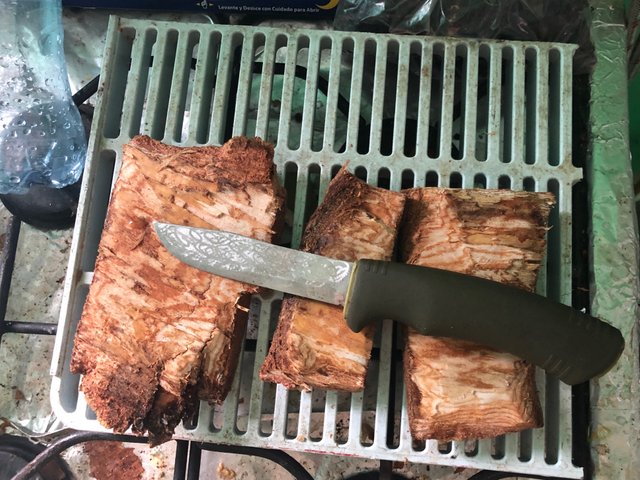Benefits of Chaka – A Game Changing Discovery, Resulting from an Unfortunate Incident
The Bursera simaruba tree – or as it's more commonly-known, the gumbo-limbo, copperwood, chaká, or turpentine tree – is a tree which provides many health benefits to the human body. The tree is native to South Florida (commonly known as copperwood or gumbo-limbo) and the jungles of Central America, down to Brazil. However, it is most prevalent in Mexico's Yucatan Peninsula, where it's healing properties seem to be common knowledge to most locals I've encountered. Among them, the most widely-known is countering the spread of a vicious rash inflicted through contact with the poisonous Chechén tree.
This rash is how the Chaká tree first came on my radar. After suffering a case of Chechén poisoning after my second trip into the Mexican-Caribe jungle, I took to Google as soon as I realized I had what appeared to be the onset of poison ivy. Coincidentally, my discovery that poison ivy isn't native to Mexico also provided me an antidote to my source of my misery on the very same Internet page.

A comparison photo of the Poisonwood (left) and Chaká (right) trees.
Generally speaking, the Chaká tree grows in close proximity to the Chechén tree; often they can be found growing side-by-side. Chaká can grow up to twenty five meters high, with quickly growing horizontal roots. However, the plant does not grow a taproot, so it's validity as a hurricane prevention-aide or a makeshift fencepost–which had been believed to be benefits the past–have recently been called into question.
However, its leaves and bark are extremely helpful in treating and even preventing the spread of Chechén poisoning, and both these plant components offer many other health benefits.
Freshly-cut Chaká bark
Live Chaká bark that has been cut from a tree provides immediate itch relief from Chechén rash. The same is true of the leaves when boiled in a pot and applied to the areas of the skin effected by Chechén. Chaka leaves have also been shown to possess general anti-inflammatory properties, and can be brewed as a tea for consumption. Chaká resin also is commonly used as a treatment for gout.
One blog I discovered proved to be a great resource on how to stop the spread of the disease. The post had nearly 70 comments from those who had experienced run-ins with Chechén, with many of those who contracted the rash offering suggestions for treatment they learned experience. I used several of these verified remedies, but added my own unique spin to round out the treatment.
The best recommendation I found for stopping the spread at the onset, was to vigioursly scrub your body head-to-toe with dish soap (commenters kept specifically mentioning Dawn detergent, but I'm fairly sure any oil-based dish soap will work) while showering. This will effectively remove all the toxins being secreted by the urushiol oil (the toxic component in the sap), thus preventing it from spreading all over your body when you touch it. If possible, try to scrub and especially rinse the effected areas last. This will ensures that the contaminated water runoff will make the least possible contact with your body. The waste-water contains all the toxins being secreted from the urushiol-spewing abscess, and can spread easily to other areas of your body that it comes in contact with.
The next step however, is perhaps the most important, and was the one that was missed by almost all the commenters... APPLY CHAKA!
Directly after rinsing the dish soap off, I would pour a glass of water boiled with a bunch of chaka leaves or bark, or a combination, over my head and shoulders, and then directly on all the other areas that still itched. I would dry those areas last, and simply pat them down with a towel to minimize spreading. Then, when dry, I would reapply hot chaka-tea with a couple fingers or a facecloth to all the areas I could still sense the burn. I would then repeat this last step over and over
The blog post had mentioned using Chaká several times, but likely due to the fact that it was inaccessible for the majority of commenters, who seemed to be primarily American tourists who had already returned home – it went largely unmentioned. For those readers without the luxury of access to Chaká, the best recommendation I can offer is to take Benadryl or another antihistamine to stop the allergic reaction, and apply a hydrocortisone (steroid) cream to the affected areas to dry them out, and reduce spreading and redness. Baking soda or aloe vera can also be applied in this manner for a more holistic approach.
The other helpful piece of advice I can offer is to stay out of the sun as much as possible after you identify the rash. Before I knew what I had contracted, I continued my day-to-day routine for several days, getting hot and sweaty while working and skateboarding in the sun. In retrospect, this was a huge mistake. As previously mentioned, contact and moisture are two things to avoid after suffering a Chechén burn. Both really only spread the toxins to other areas, and when combined, like in the case of a t-shirt rubbing on a sweaty stomache, new areas can start to spread when you had believed yourself to be recovering..
I would also repeat the same procedure for all clothes and bedding that may have been in direct contact with your skin, or directly in contact with the plant. Wash with dish soap, then wash with hot water boiled with chaka leaves or bark. Then, if you want to be extremely cautious, use bleach on everything. At the very least, the extra precaution will provide some peace of mind when grappling with such a horrific condition.
